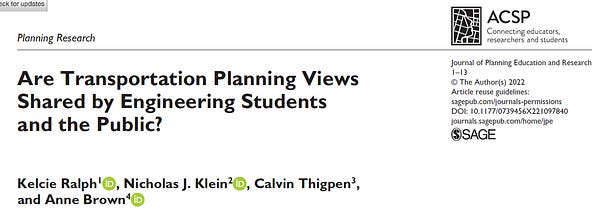2022 Year in Review
Collective Form, urbanism, and the future of interactive community engagement
There and Back Again
This past November I traveled back to Tokyo for the first time since leaving in February of 2020. On the surface, it was business as usual — packed trains, busy streets, and beer-sipping patrons enjoying hot food. Aside from near-universal mask wearing, you could be excused for thinking nothing had changed since 2019.
Of course, upon closer inspection, it was clear that many things had changed. Office buildings were largely converted to coworking and meeting spaces. Corporate workers were staying home. And the lack of western tourists was noticeable.
In just two years, Tokyo had completely adapted to a new normal. I can’t say whether it’s for better or worse, but I can marvel at the speed in which we adapt our urban environments to accommodate our shifting needs and wants.
I look forward to seeing the next iteration.
Best Wishes & Happy Holidays
Ryan
A Year at Collective Form
From the birthplace of jazz to the origin of Route 66, we’ve spent much of our time this year hosting community engagement workshops and collaborating with project teams on a vision for community-led growth.
In New Orleans, we hosted a workshop with our friends at the Claiborne Avenue Alliance to re-imagine Claiborne Boulevard without its most wasteful monument. We led a workshop at CNU 30 in Oklahoma City for another community-led proposal to remove I-244 through Greenwood. Both of those projects have been highlighted by the Biden-Harris Administration as key projects for reconnecting communities.
We love to travel and explore new cities, and we will continue to do so next year as we meet and learn from local leaders that are charting a course for community-led growth.
→ Visit us at collectiveform.io
A Year in Urbanism
This year felt like the start of a momentum shift in favor of humanizing our urban spaces and creating permanent programs around tactical urbanism deployed during the pandemic. City leaders are committed to being more transparent and collaborative when planning communities, and the benefits of walkable urbanism are more widely discussed and debated at public engagement meetings.
The work to undo the harm of decades of car-centric planning continues as community-led proposals to remove urban freeways and build high quality public transit networks are met with trillions of dollars from the U.S. government.
Some of the key topics we’ve heard from urban designers and planners this year that we expect to hear more of in 2023:
Debate around fare-free public transit
Community land trusts and community ownership in general
Conflict around the future of urban freeways
Affordability and the housing shortage in the U.S.
Using reality capture to assess and monitor existing infrastructure
Generative AI tools for design and planning
→ Check out our last post: Jubilation in Buenos Aires 🇦🇷
Project Showcase: Re-Imagine Claiborne
On July 10th, 2021 in New Orleans’ Tremé neighborhood we hosted our first community workshop with the Claiborne Avenue Alliance at a local high school next to Louis Armstrong park. It was an opportunity for the project team to gather feedback from the community for a proposal to remove an elevated expressway, and it was our first pilot project for an interactive community engagement platform that would become Insite.
Fast forward to April 2022, and we are back in the birthplace of jazz with more than 75 local community members and elected officials from local and state government. The feedback from this civic gathering would inform a grant funding application to study the impact of removing the Claiborne Expressway and replacing it with a multimodal boulevard.
The feedback was incredibly valuable as we participated in the community engagement process for a grassroots proposal to remove a large piece of transportation infrastructure.
Community engagement workshop in Tremé with Congressman Troy Carter speaking to his constituents about the proposal
A beta version of an interactive project website for citizens showing the impact of removing the expressway and creating a new, multimodal boulevard
Developing a New Platform for Interactive Community Engagement
We started work on Insite during the early months of 2021 with the goal of educating the public on the merits of good urbanism — including better infrastructure for walking, rolling, and cycling. We decided to focus on community engagement for our first product because we knew we could make a big impact with improvements to existing workflows and tools.
After developing our first minimum viable product (MVP) and launching it in July of 2021, we made a slight pivot away from 3D to focus on GIS. The challenges for developing the interactive 3D software we envisioned were beyond our capabilities as an early stage, bootstrapped startup.
However, by focusing on using GIS to present information to the public, we found a simpler solution to address the problems our early partners were facing. We released our second MVP last month, and we will iterate and improve our platform as we work and learn alongside project teams.
→ Read our introduction: Presenting Insite
Library
Podcasts
Videos
The B1M (Youtube)
Tomorrow’s Build (Youtube)
City Beautiful (Youtube)
Research
Are Transportation Planning Views Shared by Engineering Students and the Public? (Sage)


Barriers and enablers of bike riding for transport and recreational purposes in Australia (Science Direct)
3D building metrics for urban morphology (UAL)
Why would people want to travel more with automated cars? (Science Direct)
Infrastructure Costs (SSRN)
Newsletters
CityBits (Substack)
The Micromobility Newsletter (Substack)
The Discourse Lounge (Substack)
Our Built Environment (Substack)
Future Southeast Asia (Substack)
Books
Emergent Tokyo: Designing the Spontaneous City (Amazon)
WALKABLE CITY: How Downtown Can Save America, One Step at a Time (Amazon)
The High Cost of Free Parking (Amazon)









